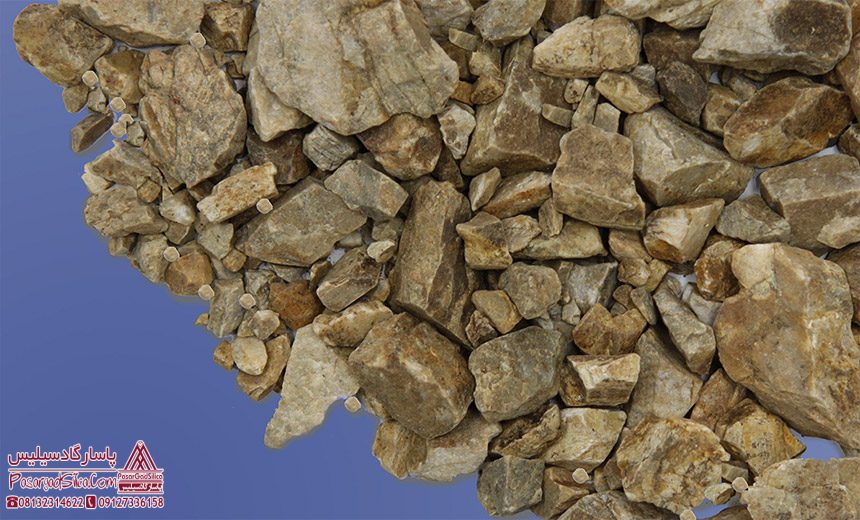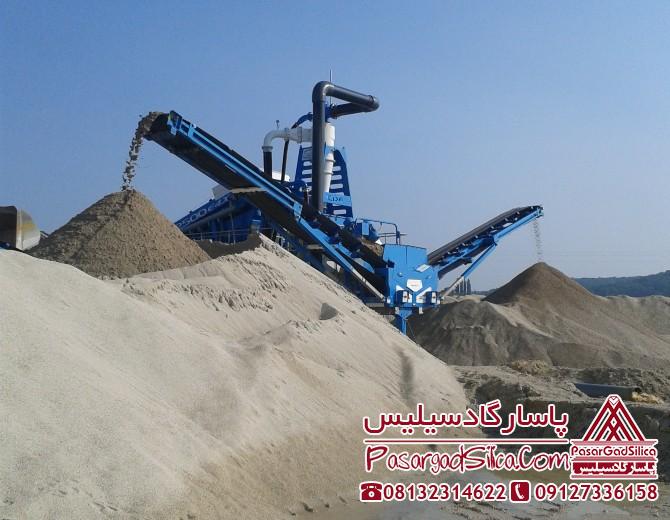What kind of stone is silica?
What kind of stone is silica?
Industrial sand, often called “silica”, “silica sand”, and “quartz sand”, includes sands and gravels with a high silicon dioxide (SiO2) content. of these sands in Glass is used. For casting, abrasive and hydraulic fracturing (frac) applications; And for many other industrial uses. Specifications vary for each application, howeverSilica sources are abundant for most uses. In almost all cases, silica mining uses open pit or dredge mining methods with standard mining equipment. Except for creationTemporary disturbance in the immediate area While mining operations are active, sand mining usually has limited environmental impacts.
فهرست مطالب

What kind of stone is silica?
Silica, any of a group of sedimentary rocks composed mainly or almost entirely of silicon dioxide (SiO2), as quartz or amorphous silica and cristobalite. It includes rocks that are formed as chemical deposits, and rocks that have a detrital or fragmentary origin are excluded.Subscribe to receive an email notification when a new publication is added to this page. On the Questions tab of the Shared Preferences page, “Silica” and any other possible options Select the one you are interested in. Please visit the List Services page for more information
What are extracted silica used for?
Many industrial and commercial processes require crystalline silica. Some notable applications of crystalline silica include glass making, road construction, molten metal molds cast in Fracking is hydraulic fracturing or “fracking” for oil and gas production, water filtration, and even electronics.
Can silica be mined everywhere?
In almost all cases, silica mining uses open pit or dredge mining methods with standard mining equipment. Except for causing a temporary disturbance in the immediate area while active Mining operations, sand extraction, usually have limited environmental impacts.
Is silica extraction harmful to the environment?
Pollution: SPM (particulate matter) produced by silica mining and from debris piled up next to mines is a threat to the local environment. These particles accumulate on the leaves and as a result disrupt the process of photosynthesis and respiration.
Is silica harmful to humans?
Silica dust particles are trapped in the lung tissue and cause inflammation and ulcers. These particles also reduce the lungs’ ability to receive oxygen. This condition is called silicosis. Silicosis leads to permanent lung damage and is a progressive, debilitating and sometimes fatal disease.
Is silica cancerous?
What is the risk of exposure to crystalline silica? Crystalline silica is classified as a human lung carcinogen and can cause serious lung disease and lung cancer. Only a very small amount of respirable silica dust is required to cause a health hazard.
How do they extract silica?
In almost all cases, silica mining uses open pit or dredge mining methods with standard mining equipment. Except for temporary disturbance in the immediate area while mining operations are active, sand mining usually has limited environmental impacts.
How is silica obtained?
Elemental silicon is produced commercially by reducing silica (SiO2) with coke in an electric furnace, and the crude product is then purified. On a small scale, silicon can be obtained from the oxide by reduction with aluminum.
What is the difference between silica and silicon?
Both silicon and silica contain silicon atoms. But silica is different from silicon due to its structure and properties. The main difference between silicon and silicon is that silicon is an element while silicon is a compound.
Are silica and silicon the same?
Silica or silicon dioxide, as the name suggests, is an oxide of silicon. It has the chemical formula SiO2 and is found naturally in quartz and various living organisms. Silica is one of the important components of sand in many parts of the world.
Is silica sand safe?
Workers who inhale these tiny particles of crystalline silica are at risk of developing serious silica-related diseases, including silicosis, an incurable lung disease that can lead to disability and death. Lung cancer; chronic obstructive pulmonary disease (COPD); And
Who is the biggest importer of sand?
Singapore is the largest importer of sand in the world, importing 517 million tons of sand in the last 20 years. Most of the sand is imported from Indonesia as well as other neighboring countries such as Malaysia, Thailand and Cambodia.
Which country is rich in silicon?
China is the largest producer of silicon in the world, whose production volume in 2021 is estimated at six million tons. The second largest producer of this metalloid in the world is Russia, which produced 580,000 metric tons in the same year.
Where does most silica sand come from?
This quartz is obtained from sources such as coastal dunes and converted into different types and grades of sand and then supplied to various industries for various applications.
Is silica sand rare?
Crystalline silica is the most common form and makes up more than 12% of the Earth’s crust, making it the second most common mineral on the planet. Crystalline silica exists in the form of quartz, cristobalite and tridymite.
Do all stones contain silicon?
Silicon is never found in its natural state, but in combination with oxygen as the silicate ion SiO44- in silica-rich rocks such as obsidian, granite, diorite, and sandstone. Feldspar and quartz are the most important silicate minerals.
See the silica dust nid?
These dust particles are very small. You cannot see them. This respirable silica dust causes lung disease and lung cancer. It only takes a very small amount of airborne silica dust to cause a health hazard.
Where does raw silicon come from?
The main sources of silicon are naturally occurring silica rock (SiO2), water and methanol derived from natural gas. Silicon is synthesized from these materials through complex chemical reactions
.
Does the glass contain silica?
Glass is made using sand, otherwise known by its chemical name “silica dioxide”, but due to the rapid heating and cooling techniques used in creating glass, both glass and round and Glass dusts are examples of amorphous silica and are therefore relatively harmless
Does the N95 protect against silica?
The NIOSH policy for respiratory protection against airborne exposure to crystalline silica is described below. NIOSH recommends the use of half-facepiece respirators with N95 or better filters for airborne exposures to crystalline silica at concentrations less than or equal to 0.5 mg/m3.

